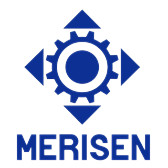
- Home
- >
- News
- >
- Ten common couplings
- >
Ten common couplings
2024-07-25 09:56Ten common couplings:
1. Serpentine spring coupling:
Serpentine spring coupling has good ability to compensate axial, radial and angular deviations, while absorbing vibrations and providing certain buffering to reduce the impact and noise of the machine. It is suitable for applications that require high precision and need to protect the transmission system from overload damage.
2. Elastic coupling:
This type of coupling absorbs vibration and torque changes through elastic elements to protect the transmission system from overload damage. It is suitable for transmission systems with vibration or high precision.
3. Gear coupling:
Gear coupling is suitable for applications that require precise speed matching and high torque transmission through gear transmission, such as factory equipment, cranes, etc.
4. Diaphragm coupling:
Diaphragm coupling compensates axial, radial and angular deviations through the elastic deformation of the metal diaphragm, while transmitting torque. It is suitable for precision machinery and occasions requiring high-precision transmission.
5. Flange coupling:
Flange coupling is connected by bolts, with simple structure, easy installation and low cost. Suitable for light loads, low speeds, and occasions with low precision requirements.
6. Slider coupling:
The slider coupling transmits torque through the sliding friction between the slider and the sleeve, and is suitable for low speed and light load occasions.
7. Universal coupling:
The universal coupling allows the shaft to rotate in multiple directions and is suitable for applications that require axial, radial and angular offsets, such as vehicle drive systems.
8. Hydraulic coupling:
The hydraulic coupling transmits torque through liquid, which can achieve stepless speed regulation and overload protection. It is suitable for occasions that require speed regulation or need to protect the motor from overload damage.
9. Safety coupling:
The safety coupling will automatically disconnect when the torque exceeds the design limit to avoid damage to other equipment components. It is suitable for industrial applications with higher risks.
10. Magnetic coupling:
The magnetic coupling transmits torque through magnetic force, without contact and wear, and is suitable for clean and pollution-free occasions, such as the food and pharmaceutical industries.
Each coupling has its specific application scenarios and advantages. Choosing the right type of coupling is crucial to ensure the stable operation and efficient operation of the system.
